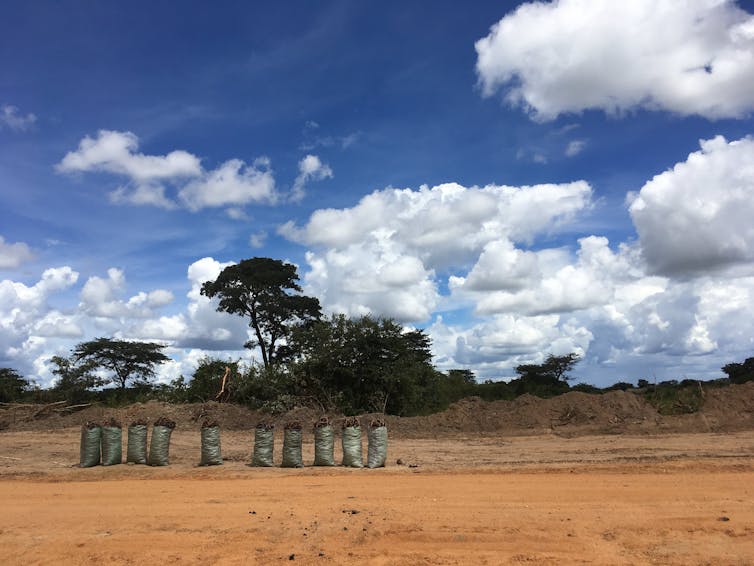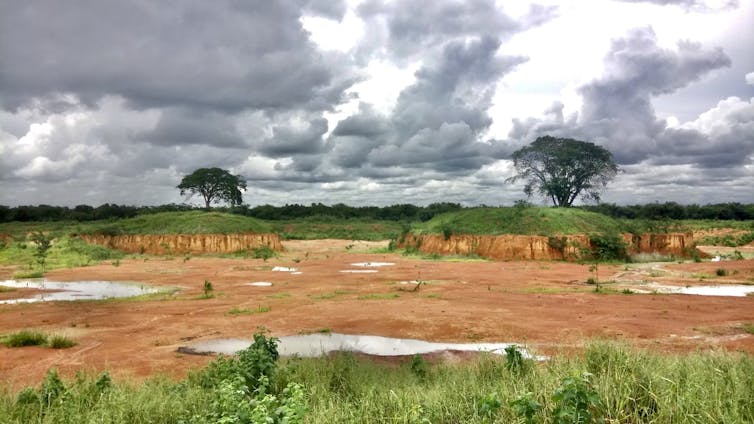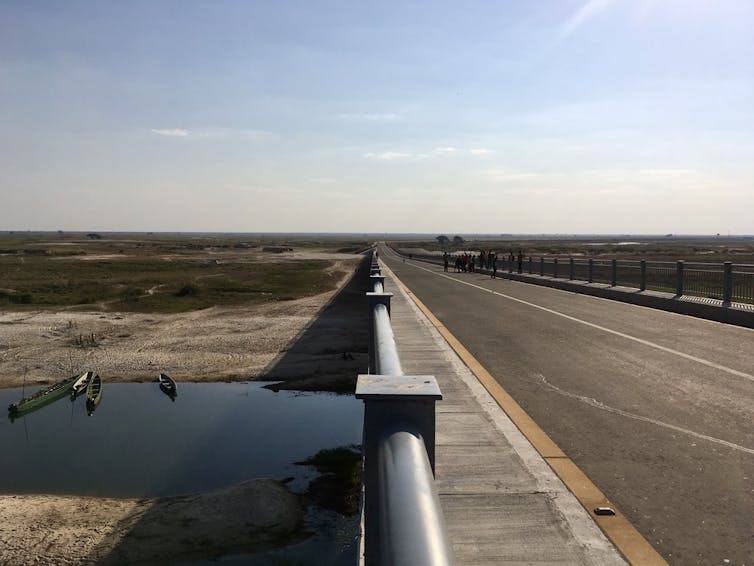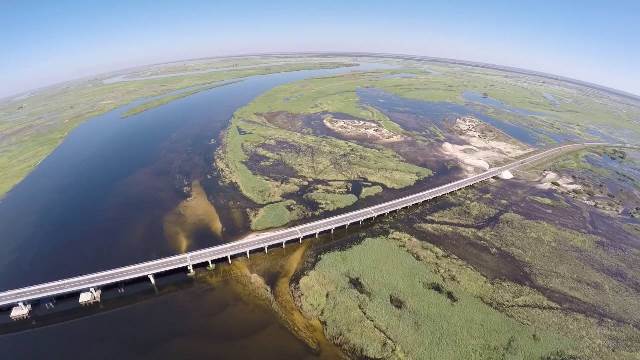Charis Enns, University of Manchester; Alex Awiti, The Aga Khan University , and Brock Bersaglio, University of Birmingham
Kenyan President Uhuru Kenyatta fumed at construction delays on the Lamu Port-South Sudan-Ethiopia Transport Corridor in 2019 – a US$22 billion (£18 billion) transport network that includes a 32-berth port, highways, railways and pipelines.
But these delays, caused by financing gaps, afforded fishers, pastoral farmers and conservationists time to challenge the project in court, and push for amended plans that better protect local habitats and migratory routes used by people, livestock and wildlife.
While major road and rail projects often break up wilderness and grazing lands, a sudden pause in construction can offer a lifeline to people fighting to protect these areas.
Lockdown restrictions and the uncertainty caused by COVID-19 have made sourcing labour and materials more difficult, increasing construction costs. The result is that infrastructure building has slowed globally, creating a unique opportunity to redesign road and rail projects around the world so that they benefit the people and environments they share the landscape with.
Barriers to travel
Dozens of new roads, railways and pipelines are under construction in sub-Saharan Africa due to a surge in investment in recent years. Although they are promised to bolster economic growth, our research shows that many of these new mega-highways and high-speed rail lines were approved without meaningful consultation between planners and local people. As a result, they tend to become new barriers that are difficult and dangerous to traverse, forcing people to travel long distances to reach safe crossing points.
In dry regions, this can make it difficult to reach vital water sources. Amid farmland and forests, construction can push people from their land or force them to travel further to reach it. Deforestation usually comes before construction too, which encourages people to migrate further into woodland, building new settlements that drive more forest clearing.

Fortunately, there are lots of proven strategies for preventing transport projects from fragmenting habitats, such as building passages across new highways and railways that migratory species can use. Repairing environmental damage caused by construction, by filling in quarries that produce construction materials, for example, can also help restore grazing land for livestock and wildlife.

The Mongu-Kalabo road constructed over the Barotse floodplain in western Zambia shows these ideas in action. Completed in 2016, the road was built with 26 bridges over the floodplains and regular culverts between bridges, allowing water and wildlife to move across the floodplain without impeding road traffic and trade, even during seasonal floods.
The road was also planned with local cultures in mind. Wetland livelihoods, such as fishing and floodplain farming, aren’t affected by the road since the regular movement of fish and water remains largely undisturbed. By maintaining these flows across the floodplain, cultural traditions have been protected. The annual Kuomboka ceremony that takes place at the end of the rainy season can continue, when the Litunda (king of the Lozi people) moves from his compound in the Barotse floodplain to higher ground.

Charis Enns, Author provided
There is no single blueprint for building roads and railways that allow humans and nature to thrive. Wherever construction is planned, public participation is vital. Gathering the knowledge local people have of their environment can improve the design of these projects, but this insight cannot come from rushed consultations or impact assessments conducted from a distance. Only meaningful and ongoing engagement with local communities and environmental authorities will do.
Major infrastructure investment will likely be key to pulling the global economy out of recession. The opportunity to mould upcoming projects won’t last forever, so let’s ensure any new road and rail project is designed with respect to the rights of people and nature.
![]() Charis Enns, Presidential Fellow in Socio-Environmental Systems, University of Manchester; Alex Awiti, Director, East African Institute, The Aga Khan University , and Brock Bersaglio, Lecturer in Environment and Development, University of Birmingham
Charis Enns, Presidential Fellow in Socio-Environmental Systems, University of Manchester; Alex Awiti, Director, East African Institute, The Aga Khan University , and Brock Bersaglio, Lecturer in Environment and Development, University of Birmingham
This article is republished from The Conversation under a Creative Commons license. Read the original article.
Also Read
Transitioning to a Greener Economy

